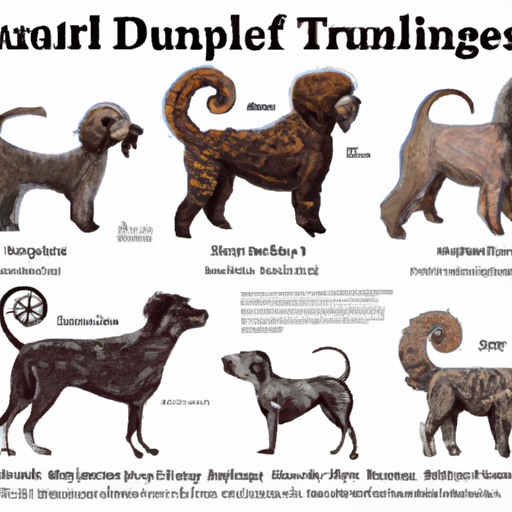From the Pug’s tight corkscrew to the Shiba Inu’s plush plume, dogs with curly tails certainly have a unique charm. But have you ever wondered why some dogs have curly tails and others don’t? And which breeds are known for this distinctive feature? Let’s delve into the world of curly-tailed canines and discover some fascinating details!
H2: The Genetics Behind the Curl
Firstly, it’s important to understand that a dog’s tail curl is determined by its genetics. The curling of the tail is a result of selective breeding by humans over hundreds of years. This trait is often associated with certain breeds and can be an important identifier.
- Gene Inheritance: The curling trait is likely to be recessive, meaning both parents need to have the gene to pass it on.
- Breed Standards: In some breeds, a curled tail is part of the breed standard. It’s seen as an aesthetic feature and often plays a role in dog shows and competitions.
H2: Breeds with Curly Tails
There are several breeds known for their curly tails. Here are five of the most popular:
- Pug: These small dogs have a tight, double curl tail that sits high on their back.
- Siberian Husky: Huskies have a brush-like tail that curls over their back.
- Shiba Inu: This Japanese breed has a thick, plush tail that curls over to one side.
- Akita: Akitas have a large, double curl tail.
- Alaskan Malamute: These dogs have a fluffy, plume-like tail that curls over their back.
| Breed | Description of Tail |
|---|---|
| Pug | Tight, double curl |
| Siberian Husky | Brush-like, curls over back |
| Shiba Inu | Thick, plush, curls to one side |
| Akita | Large, double curl |
| Alaskan Malamute | Fluffy, plume-like, curls over back |
H2: Health Concerns Related to Curly Tails
Although a curly tail might be cute, it can also come with health concerns:
- Spinal Issues: Dogs with curly tails may be prone to certain spinal issues due to the curling of the vertebrae.
- Infection: The tight curl in some tails can lead to infection if not kept clean.
As a caregiver, it’s essential to be aware of these potential issues and provide the necessary healthcare for your curly-tailed companion.
H2: The Purpose of the Curl
Finally, you might be wondering why dogs have curly tails in the first place. While the exact reason isn’t clear, there are some theories:
- Signaling: The tail is an important communication tool for dogs. A curled tail might be more visible to other dogs.
- Protection: In cold climates, a curled tail can be wrapped around the body for warmth.
H2: Frequently Asked Questions (FAQs)
Q: Can a dog’s tail change from straight to curly?
A: No, a dog’s tail won’t change from straight to curly. It’s determined by their genetics.
Q: Are curly tails in dogs a sign of breed purity?
A: Not necessarily. While certain breeds are known for their curly tails, it’s not a definitive indicator of breed purity.
Q: Do all puppies of a certain breed have curly tails?
A: If both parents have the gene for a curly tail, the puppies are likely to inherit it. However, there can still be variations.
In conclusion, dogs with curly tails are incredibly diverse, from small, companion breeds like the Pug to large, working dogs like the Alaskan Malamute. As a caregiver, understanding the genetics, health implications, and purpose behind this unique trait can help you provide the best care for your curly-tailed friend.



